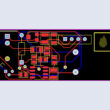When talking about collaborative hardware design, the words ‘Version Control’ constantly pop up. But what exactly do they mean? Essentially, version control is a set of systems which manages changes made to large banks of information such as computer programs (software) and product designs (hardware). It enables multiple users to work on one thing simultaneously without hindering each other’s workflow.
This is highly beneficial for hardware companies as it makes development faster and more efficient. No matter what the scale of a hardware project is, version control is instrumental in making its development go smoothly. In addition, even if only one person is working on a project, they can access it from different systems if they incorporate version control in their workflow.
However, not all version control systems are built the same. They are divided into four clear types, each with its own set of advantages and disadvantages. Companies and individuals must determine which type serves their needs in the best way, and choose accordingly.
What Types of Version Control Systems are there?
Version Control does not refer to just one type of system. Rather, it is divided into four types, which are all suited to one industry or the other. Let’s go over the different types and then determine which one works best for the hardware industry.
Local Version Control
The most simplistic type is Local Version Control. In this system, files are maintained and tracked within the local system itself. This works fine for people who know they’ll be working on one system and are the only stakeholder of the project. It does not enable sharing or collaboration, so it might not be the right type to use in the increasingly collaborative and globalized hardware industry. In addition, as only the local system is being used, the chances of accidentally writing to the wrong file in the repository are high. These days, local version control systems have lost popularity.
Centralized Version Control
These types of version control systems work along the lines of a library. They consist of a central server and various nodes which the users work on. To make any changes, the users need to get the code to the master repository in the central server, and work on it on their local systems. Then, once they’ve made the changes, they upload and merge the changes to the central repository.
Having a central server is useful for industries where there needs to be control and scrutiny over how the work is being done, and accesses need to be strictly controlled. In the hardware sector, this is applicable to classified projects, particularly when it comes to weaponry and communication design for military usage. The administrators have tight control over what happens with the product design and its accesses, so it is useful for cases where designs need to be kept classified or controlled. However, for other sectors, having to check out the repository to work on it can be quite tedious.
Examples: Subversion (SVN), Concurrent Version System (CVS)
Used by: Wikipedia
Decentralized Version Control
As implied by the name, this is the opposite of a centralized version control system. Decentralized systems do not have any central server or central node. Instead, they consist of a number of individual, independent nodes. These nodes make their own decisions, and work together to maintain the performance of the entire system.
Decentralized version control has become popular due to the advent of cryptocurrency. As there is no single entity controlling the system, it is particularly suited to maintaining cryptocurrency accounts. However, there is no central clock to maintain temporal order, so it is not suitable for orderly multi-step workflows. Therefore, decentralized version control is not really useful for the hardware design industry.
Used by: Bitcoin, Tor Network
Distributed VC
Distributed version control systems are similar to centralized systems, without the administrative hurdles. Basically, all the users have their own server, and access to all the data in the repository, and authority to view or alter them without the need to check them out of a central server.
It makes things much easier for companies, as designers can work on the repositories from their own systems, and then commit changes to the master branch without having to wait for authorization. This is especially useful for remote teams, and also streamlines the workflow. Systems tailor-made for numerous industries also include visual diffing to make things easier. It is the type of version control most suited to and most commonly used in the hardware industry, due to these factors.
Examples: Git, InventHub
Used by: Apple, Facebook, Google
So, now that the types of version control systems are clear, companies can determine what works best for them. When it comes to the hardware industry, distributed version control systems are the best bet and are the industry standard.








